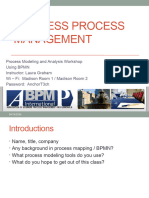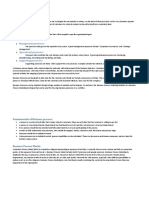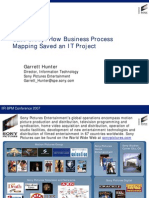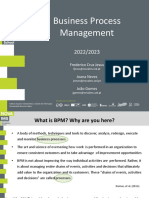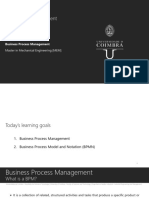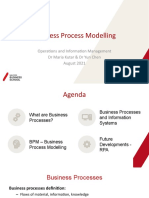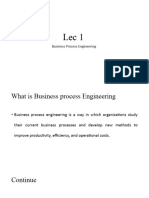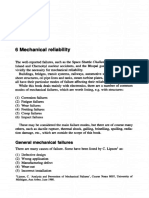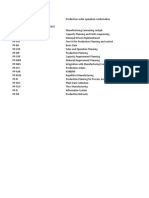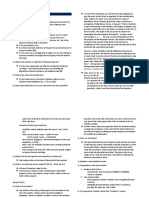0% found this document useful (0 votes)
128 views41 pagesProcess-Modelling Balbir Barn
The document discusses business process modeling. It begins by defining a business process as a set of tasks that produce a specified output for customers. The purposes of business process modeling include process documentation, reorganization, monitoring, improvement and information systems design. The document then covers historical contexts of business process modeling approaches, including reengineering in the 1990s and later waves focusing on continuous improvement. It also discusses concepts, notations, tools and standards in business process modeling and management.
Uploaded by
cristianonfCopyright
© Attribution Non-Commercial (BY-NC)
We take content rights seriously. If you suspect this is your content, claim it here.
Available Formats
Download as PDF, TXT or read online on Scribd
0% found this document useful (0 votes)
128 views41 pagesProcess-Modelling Balbir Barn
The document discusses business process modeling. It begins by defining a business process as a set of tasks that produce a specified output for customers. The purposes of business process modeling include process documentation, reorganization, monitoring, improvement and information systems design. The document then covers historical contexts of business process modeling approaches, including reengineering in the 1990s and later waves focusing on continuous improvement. It also discusses concepts, notations, tools and standards in business process modeling and management.
Uploaded by
cristianonfCopyright
© Attribution Non-Commercial (BY-NC)
We take content rights seriously. If you suspect this is your content, claim it here.
Available Formats
Download as PDF, TXT or read online on Scribd
/ 41




